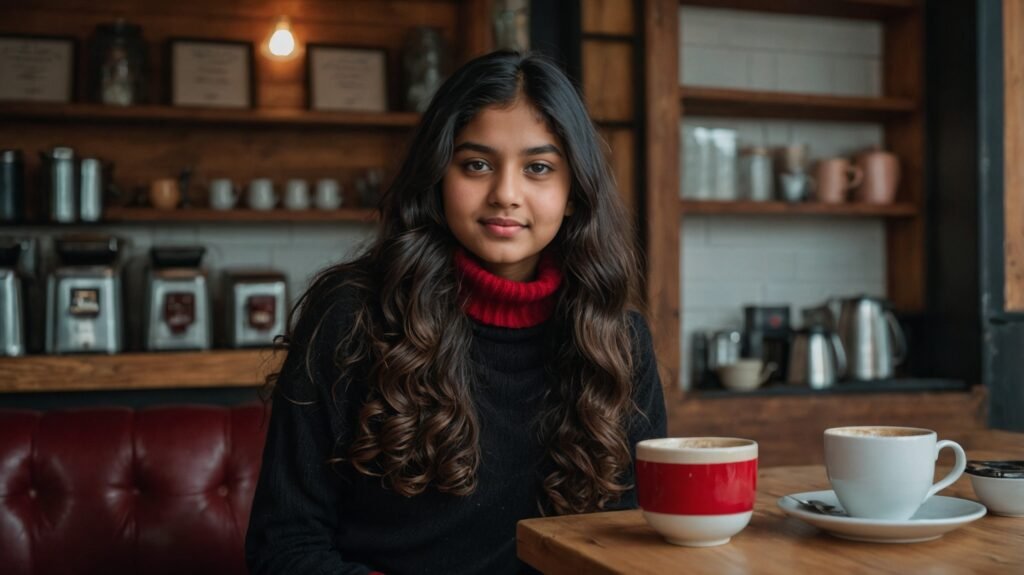Key Takeaways
- The 90s brought a clash of styles with grungy, muted tones and bright, glam hues.
- Grunge style emerged from the Seattle music scene with shades like army green, gray, beige and burgundy.
- Glam fashion embraced neon pink, blue, purple and animal prints in tight, revealing designs.
- While grunge favored flannels, combat boots and ripped jeans, glam adored mini skirts, platform shoes and crop tops.
- Make-up also followed both trends, with dark lips and smokey eyes for grunge girls versus frosty eyeshadow and gloss for glam.
- Grunge appealed to the anti-establishment attitude of Gen X while glam captured mainstream pop culture.
- Towards late 90s, hip hop fashion brought bold streetwear colors, popularizing Tommy Hilfiger.
- Y2K futurism pushed hyper-saturated tones, metallics and iridescence into the new millennium.
- 90s color trends reveal the cultural split between underground scenes and mass consumerism.
The 1990s were a decade full of fashion contradictions. Grunge fashion embraced muted tones and edgy, anti-mainstream styles, while vibrant neon colors lit up the pop culture and glam fashion scenes. These contrasting color trends—grunge’s subdued palette versus pop’s bold neon hues—competed for influence throughout 90s fashion history.

Grunge Color Palette: Army Green, Gray, Beige and Burgundy
Grunge fashion grew out of the late 80s Seattle underground music movement, which favored thrifted plaid shirts, ripped jeans and combat boots. This casual, messy style spread globally as bands like Nirvana and Pearl Jam achieved mainstream success. The muted, earthy grunge color palette rejected the bold 80s aesthetic. Key shades included army green, beige, charcoal gray and burgundy, creating a muted camouflage effect. These colors mirrored the apathetic attitude and bleak outlook of Generation X.
Growth from Local Scenes to International Trend
Grunge fashion originated in the Pacific Northwest, particularly in the music scenes of Seattle, Portland, and Vancouver. Locals embraced thrift store finds and military surplus clothing, adopting workwear styles to create an ironic, anti-fashion statement that defined grunge style. As Seattle grunge bands like Nirvana and Pearl Jam achieved global fame, their unique fashion sense influenced mainstream trends. Renowned designers such as Marc Jacobs and Anna Sui brought grunge fashion to the forefront by featuring it in their iconic 1990s runway collections.
Flannels, Combat Boots and Ripped Jeans
Loose plaid flannel shirts in faded shades became ubiquitous grunge wardrobe staples. These were paired with oversized knits, thermal tops and vintage band tees. Bleached and ripped jeans showed wear, while Dr. Martens boots and Converse sneakers finished the carefree look. Make-up tended dark, with black lipstick, smokey eyes and disheveled hair. Grunge offered liberation from 80s power dressing and let women dress down.
Unisex Appeal
Grunge clothing had an androgynous, unisex appeal. Both men and women wore lumberjack plaids, ripped baggy jeans and work boots. This gave women in particular more freedom to dress casually without judgement. It also reflected grunge’s disinterest in gender roles, beauty standards and social norms. The anti-fashion colors and silhouettes purposefully rejected conforming to mainstream expectations.

Glam 90s Color Palette: Neon, Fuchsia, Baby Blue and Zebra Stripes
On the flip side, 90s glam and pop fashion embraced a maximalist aesthetic with bold neon brights, clashing prints and revealing cuts. Hyper-feminine babydoll dresses, mini skirts and platform shoes let women put their own empowered spin on femininity, inspired by pop icons like Clueless’ Cher and the Spice Girls. The electric glam color palette provided an optimistic, vibrant counterpart to grunge cynicism.
Rave and Party Culture
Acid house music and rave culture heavily influenced glam fashion. Neon pinks, greens, blues and purples popped under blacklights at clubs and parties. Shiny fabrics like latex, vinyl and metallic leathers added futuristic flair. These eye-catching hues transferred from the underground rave scene into mainstream designs. The popularity of artists like Britney Spears, TLC and Destiny’s Child spread glam looks globally.
Revealing, Hyper-Feminine Silhouettes
In contrast to grunge’s baggy layers, glam outfits highlighted the female figure. Curve-hugging minidresses, micro miniskirts, tube tops and halter crop tops revealed the maximal amount of skin. Fake fur, animal prints and metallic fabrics added sexy textures. While critics argued these clothing promoted “skimpy” stereotypes, many women enjoyed exerting their self-confidence and freedom through bold fashion statements.
Make-Up and Beauty Culture
Makeup trends of the era showcased a bold contrast between vibrant neon colors and subtle nude shades. Electric blue eyeshadow, shimmering frosty lip gloss, and playful butterfly hair clips became signature accessories for the glamorous girl. Sun-kissed tanning, hair highlighting, and acrylic nails were essential elements in achieving this high-maintenance beauty look. This polished beauty routine sharply contrasted with the rebellious, anti-beauty attitude associated with grunge style. The widespread presence of glam makeup and fashion on MTV and in teen magazines made these beauty trends irresistible to young consumers seeking the ultimate glamorous look.

Hip Hop Sportswear Craze: Tommy Hilfiger, FUBU and Bandanas
While grunge and glam battled for mass appeal, hip hop made its own impact on 90s color trends. Urban streetwear labels like Tommy Hilfiger, FUBU, Phat Farm and Mecca infused bright, bold hues into casual sportswear. Oversized football and basketball jerseys, puffy jackets, baseball caps and joggers came in vibrant reds, yellows, greens, blues and purples. Accessories like gold chains, watches and bandanas finished the high-impact look. As hip hop crossed over into the mainstream, the basketball court and city streets drastically expanded the 90s color palette.

Y2K Futurism: Metallics, Iridescence and Synthetics
Approaching the millennium, Y2K futurism added one more color trend. Metallic silver and gold dominated, alongside iridescent fabrics, vinyls and plastics. Holographic textures and turquoise matrix shades evoked technology and new millennium optimism. Cowboy styles from stars like Britney Spears and *NSync incorporated metallic silver pleather. Rave fashion continued influencing clothes for the 2000s, making way for candy-colored trucker hats, low-rise jeans and bedazzled everything.

Dual Color Trends Reflected Culture Splits
The contradictory color schemes of the 1990s reflect the cultural divide of the times. While grunge rebels used drab shades to reject capitalism and mass media, glam enthusiasts embraced neon brights spread by MTV. At the same time, hip hop introduced bold streetwear as it entered the mainstream. These simultaneous trends demonstrate the complexities of 90s society split between alternative subcultures and commercial pop dominance. Both color palettes made statements – grunge with muted camouflage, glam with vivid non-conformity. Their clashing dichotomy defined the decade’s aesthetics and cultural landscape. The trends also paved the way for the wild styles to come in the new millennium.

Summary Table
| 90s Fashion Trend | Key Colors | Influences | Example Garments |
|---|---|---|---|
| Grunge | Army green, gray, beige, burgundy | Seattle music scene, thrift/surplus stores, Gen X attitude | Flannel shirts, ripped jeans, combat boots |
| Glam | Neon pink, purple, blue, lime green | Rave culture, pop icons like Spice Girls | Mini skirts, crop tops, platform shoes |
| Hip Hop | Red, blue, green, yellow, purple | Urban streetwear brands, basketball culture | Oversized jerseys, puffy jackets, joggers |
| Y2K Futurism | Metallics, silver, gold, iridescent | Millennium optimism, rave fashion | Holographic fabrics, pleather cowboy styles |
Conclusion
The 1990s presented a myriad of color stories that represented contrasting cultural perspectives. The muted earth tones of grunge spoke to jaded Generation X, while glam’s neon brights captured youthful optimism. Street influences of hip hop expanded colors even further. As we enter the 2020s, 90s retro fashion pulls from all these dynamic palettes. Core items like flannels, mini skirts and puffer jackets maintain popularity but gain modern updates. By blending grunge with glam, today’s trends continue the spirit of 90s contradiction and transition. The decade’s split color personality still inspires how we use clothing to make bold statements.

Frequently Asked Questions
What colors were popular in 90s fashion?
The biggest color trends in 90s fashion were the muted earth tones of grunge, including army green, beige, gray, and burgundy, and the bright neon shades of glam, like hot pink, lime green, baby blue, and purple.
How did 90s grunge influence color trends?
Grunge brought darker, muted colors like faded plaid flannels, olive and camo greens, greys, and browns into mainstream fashion as an antithesis to the bold 80s aesthetic. The earthy color palette reflected grunge’s gritty, apathetic attitude.
What colors defined 90s glam and pop fashion?
Glam 90s fashion embraced bright neon colors like hot pink, lime green, baby blue, and purple, as well as zebra and leopard prints. These fun, optimistic shades were seen on mini skirts, crop tops and platform shoes and influenced by artists like the Spice Girls.
How did hip hop influence 90s color trends?
Hip hop brought streetwear colors like red, yellow, green, blue and purple through brands like Tommy Hilfiger, FUBU and Mecca. Oversized jerseys, puffer jackets, joggers and baseball caps featured these vibrant shades.
What was Y2K futurism style?
As the 90s ended, Y2K futurism celebrated the new millennium through metallic silver and blue-tinted holographic fabrics. Cowboy pop stars like Britney Spears wore silver pleather. Rave fashion continued as candy raver culture emerged.
Why did grunge and glam showcase such different color palettes?
The clashing color trends between grunge and glam reflected the cultural divide of the 90s. Grunge used muted tones to rebel against capitalism, while glam’s bright colors aligned with mass media and consumerism driven by icons like the Spice Girls.
How do 90s color trends influence today’s fashion?
Many modern designers blend elements of 90s grunge and glam for contemporary collections. Key pieces like flannels, crop tops and puffers maintain popularity but incorporate bold new colors and prints. The dichotomy between 90s color palettes continues to inspire eclectic mixing and matching.
How did 90s fashion reflect youth culture?
Through different aesthetics, 90s fashion allowed young generations to use style to make statements. Grunge reflected Gen X disaffection, glam captured teen spirit, and hip hop spoke to urban youth identity. Across subcultures, youth found self-expression through the decade’s diverse color trends.
What made 90s style contradictory?
The 90s presented many contradictory trends at once. Grunge was muted and baggy while glam was brightly colored and skimpy. Hip hop brought streetwear into the mainstream as grunge rejected commercialism. The simultaneous trends demonstrated the cultural splits between alternative scenes and mass media dominance.

Lenny Terra is a vibrant force in the world of fashion and design. Effortlessly blending his expertise in colors with a keen artistic vision, he unveils the most sought-after hues of the season, turning ordinary ensembles into iconic looks. His knack for creating visually enthralling content ensures that every piece resonates with readers, offering them a mesmerizing journey through the realms of color and fashion. Lenny’s unmatched skills not only elevate the aesthetics but also promise an enchanting experience every time. Dive into his creations and let the colors speak for themselves.
Reviewed By: Joanna Perez and Anna West
Edited By: Marcella Raskin
Fact Checked By: Sam Goldman
Photos Taken or Curated By: Matthew Mansour
